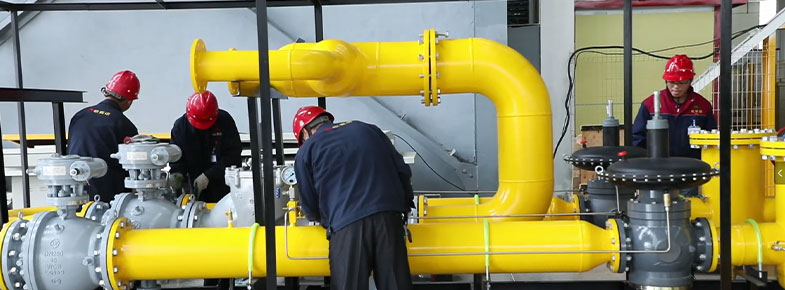
Sep . 22, 2024 09:14
Back to list
gas safety relief valve
Understanding Gas Safety Relief Valves A Critical Component for Safety
Gas safety relief valves are essential devices utilized in various industries to prevent the dangers associated with excessive pressure in gas systems. These valves play a crucial role in protecting equipment and ensuring the safety of personnel by automatically releasing gas when the pressure exceeds a predetermined limit. In this article, we will explore the importance of gas safety relief valves, their operation, and key considerations for their maintenance.
What is a Gas Safety Relief Valve?
A gas safety relief valve is designed to maintain a safe pressure level within gas systems, including pipelines, storage tanks, and industrial equipment. These valves serve as a safety mechanism by opening at a specified pressure to release excess gas, thereby preventing system failures that could lead to catastrophic incidents such as explosions or leaks.
How Do They Work?
The operation of a gas safety relief valve is relatively straightforward but highly effective. Each valve is calibrated to a specific pressure setting. When the internal pressure of the system rises beyond this set point, the valve opens automatically. Gas is vented safely into the atmosphere or into a containment system, effectively reducing the internal pressure to a safe level. Once the pressure falls back below the threshold, the valve closes, returning the system to normal operation.
Importance of Gas Safety Relief Valves
The significance of gas safety relief valves cannot be overstated
. They are vital for1. Preventing Explosive Hazards High-pressure scenarios can lead to explosions, resulting in property damage and endangering lives. Relief valves mitigate this risk by controlling pressure levels.
2. Protecting Equipment Excessive pressure can cause structural damage to equipment, leading to costly repairs and downtime. By alleviating pressure buildup, relief valves help maintain the integrity of gas systems.
gas safety relief valve

3. Regulatory Compliance Many industries are required to adhere to strict safety regulations that mandate the installation and maintenance of safety relief valves. Compliance not only ensures safety but also helps avoid legal repercussions.
4. Maintaining Efficiency When systems operate under safe pressure conditions, they function more efficiently. This efficiency translates into energy savings and prolonged equipment lifespan.
Maintenance Considerations
To ensure the reliability of gas safety relief valves, regular maintenance is essential. Here are some important tips
- Routine Inspections Conduct regular inspections to ensure valves are functioning correctly and are free from corrosion or blockages.
- Testing Pressure Settings Periodically test the pressure settings of the valves to confirm they are calibrated accurately.
- Immediate Repairs Address any signs of malfunction, such as leakage or failure to open/close, immediately to prevent safety hazards.
- Documentation Keep detailed records of inspections, maintenance activities, and any replacements made for future reference and compliance purposes.
Conclusion
Gas safety relief valves are indispensable tools that safeguard the integrity of gas systems and protect human lives. Their role in regulating pressure cannot be overlooked, and proper maintenance ensures that they perform effectively. As industries continue to evolve, the need for reliable safety mechanisms like gas safety relief valves will remain paramount in preventing dangerous incidents. Investing in these devices is not only a regulatory requirement but a commitment to safety and operational excellence.
Latest news
-
Safety Valve Spring-Loaded Design Overpressure ProtectionNewsJul.25,2025
-
Precision Voltage Regulator AC5 Accuracy Grade PerformanceNewsJul.25,2025
-
Natural Gas Pressure Regulating Skid Industrial Pipeline ApplicationsNewsJul.25,2025
-
Natural Gas Filter Stainless Steel Mesh Element DesignNewsJul.25,2025
-
Gas Pressure Regulator Valve Direct-Acting Spring-Loaded DesignNewsJul.25,2025
-
Decompression Equipment Multi-Stage Heat Exchange System DesignNewsJul.25,2025

